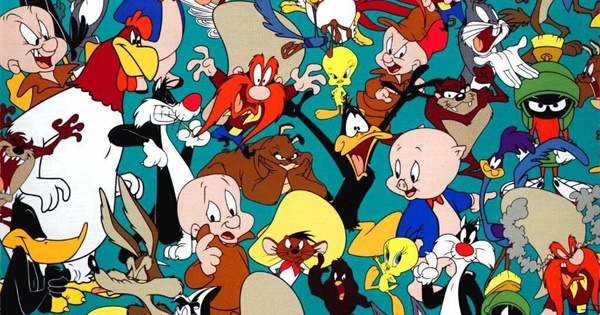Movie News
Why Was The Looney Tunes Show Cancelled? Unpacking the Reasons Behind Its Demise
Why Was The Looney Tunes Show Cancelled?
One of the primary reasons contributing to the cancellation of The Looney Tunes Show was a notable shift in audience dynamics. Initially conceived to cater to both children and adults, the show boasted sophisticated humor intertwined with a nostalgic charm, aiming to captivate viewers across generations. However, despite its efforts to strike a balance between appealing to youthful audiences and engaging older viewers, the show faced challenges in maintaining a consistent following among the younger demographic.
Network executives closely monitored viewership metrics and ratings, revealing a concerning trend: The Looney Tunes Show struggled to secure a loyal and sizeable viewership among children—a crucial demographic for animated series aired on networks primarily targeting younger audiences. While the show’s humor and narrative may have resonated well with adult viewers, its inability to consistently attract and retain the attention of children impacted its overall performance and commercial viability.

The competitive landscape of children’s programming posed additional hurdles. With an array of animated series vying for attention and loyalty, networks faced immense pressure to deliver content that not only entertained but also cultivated a dedicated fan base among children—a demographic known for its fickle preferences and evolving interests. In this fiercely competitive environment, The Looney Tunes Show encountered difficulties in carving out a niche and establishing a stronghold among its intended audience.
Moreover, shifting consumer habits and preferences in the realm of entertainment further complicated the show’s prospects. With the advent of streaming platforms and on-demand content, viewers gained unprecedented access to a vast array of programming tailored to their individual tastes and interests. Consequently, traditional broadcast networks faced heightened challenges in retaining viewership and adapting to evolving consumption patterns.

In light of these factors, the network faced a difficult decision regarding the future of The Looney Tunes Show. Despite its initial promise and nostalgic allure, the show’s struggle to resonate with its target audience, particularly children, ultimately influenced the network’s decision to discontinue its run after just two seasons. As the landscape of children’s programming continues to evolve, the legacy of The Looney Tunes Show serves as a poignant reminder of the ever-shifting dynamics and challenges inherent in the entertainment industry.
Network Repositioning and Strategic Changes:
Competition from Other Shows:
In the ever-evolving landscape of animation, competition among television series is fierce, and during the tenure of The Looney Tunes Show, several new animated series emerged, capturing the audience’s attention and diverting it away from more traditional formats. Shows such as Adventure Time and Regular Show burst onto the scene with their innovative storytelling, vibrant visuals, and quirky characters, quickly garnering widespread acclaim and a dedicated fan base.
Adventure Time, created by Pendleton Ward, enchanted audiences with its whimsical adventures set in the post-apocalyptic Land of Ooo. The series, known for its surreal humor, rich world-building, and poignant themes, struck a chord with viewers of all ages, transcending traditional demographic boundaries. Its dynamic narrative structure and diverse cast of characters, including the heroic Finn the Human and his shape-shifting canine companion Jake the Dog, captivated audiences and propelled the show to cultural phenomenon status.

Similarly, Regular Show, created by J.G. Quintel, charmed audiences with its offbeat humor and off-kilter premise. Set in the fictional park where two slackers, Mordecai the blue jay and Rigby the raccoon, work as groundskeepers, the series delivered a blend of absurdity, nostalgia, and heartwarming moments. Its relatable characters, relatable situations, and surreal adventures resonated with viewers, earning widespread acclaim and a devoted following.
As Adventure Time and Regular Show rose to prominence, they reshaped audience expectations and preferences, setting a new standard for animated storytelling. Their success highlighted the demand for content that pushed creative boundaries, embraced unconventional narratives, and appealed to a diverse range of viewers. In contrast, the more traditional format of The Looney Tunes Show, while beloved for its iconic characters and nostalgic appeal, struggled to compete with the fresh and innovative content offered by these emerging series.

The emergence of Adventure Time, Regular Show, and similar animated series underscored the shifting tastes and dynamics within the animation landscape. Audiences gravitated towards content that offered novelty, creativity, and a departure from conventional storytelling tropes. As these new favorites captured the spotlight, the once-dominant presence of traditional formats like The Looney Tunes Show gradually waned, highlighting the relentless pace of change and evolution within the animation industry.
